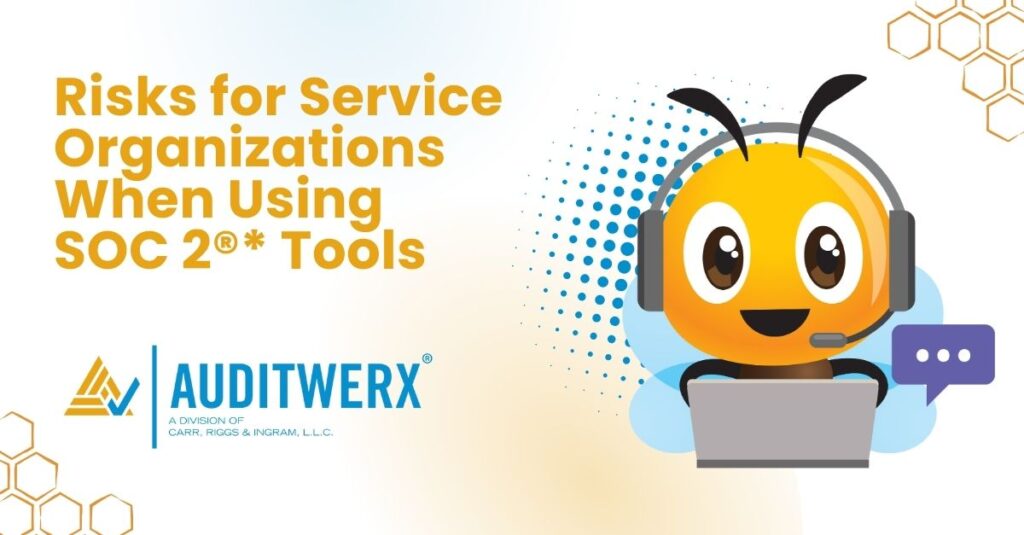
When SOC 2®* tools are properly designed and managed, they can benefit service organizations and assessors alike. However, depending on the scope of the tools, there are risks that both parties need to be aware of when it comes to SOC 2® reporting.
What are SOC 2®* Tools?
Software solutions that help to improve efficiency when preparing for, or undergoing, a SOC 2® assessment have been gaining traction rapidly in recent years. They can help to collect and organize a service organization’s documentation, allowing the assessor to access said information to support the assessor’s understanding of key controls. This can help the assessor design the proper procedures to gain evidence in regard to the suitability and design of controls that need to be assessed. These tools can also be utilized for risk assessment purposes, vendor management, or control monitoring.
Depending on the scope of how your service organization might use SOC 2® tools, the tool provider could be considered a subservice organization, but in other cases it could be considered part of the system of internal control. Tools like this can either be hosted within the service organization’s system or provided as a SaaS solution. Depending on how the tool is integrated with your system, your organization could incur additional time or fees during the assessment process.
Risks Associated to the Use of SOC 2®* Tools
The risks associated with using SOC 2® tools are related to the scope and functionality of the tool and how your organization uses it. While not an exhaustive list, the following are risks your organization should consider:
- The SOC 2® tool may not always function as intended. If a service organization is not aware that a tool is not working as intended, then that could lead to incorrect information being passed on to the assessor. Your independent assessot will need to spend additional time in order to assess the data collected for completeness and accuracy.
- Management may not fully understand the effect of services provided by the tool provider as it relates to the system of internal control. Relying too heavily on a tool could lead to failure to utilize the tool correctly or overreliance on the data the tool collects. For instance, if your organization uses unique technologies not accounted for by the tool, the data collected may not give an accurate picture of the efficacy of controls. This could mean controls are not suitably designed or operating effectively.
- Management may lack critical skills and competencies to properly utilize the tool and related services. Overreliance on tools may mean that management will be unable to take responsibility for the suitability of design or the operating effectiveness of controls based on the applicable Trust Services Criteria.
Auditwerx is Here to Support Your SOC 2®* Needs
SOC 2® reporting doesn’t have to be complicated when you have a trusted assessor like Auditwerx by your side. Starting your compliance process with an independent assessor can help simplify the SOC 2® reporting process from the beginning. Contact us today.






